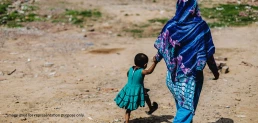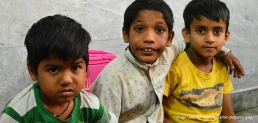The Importance of Early Childhood Care and Education
The initial years of a child’s life are the basis and foundation of a whole life of learning, health, and success. Between birth and age eight, children undergo a rapid brain development that defines their way of thinking, feeling, and relating to the world. Early childhood care and education of high quality not only fosters curiosity and creativity but also enhances social, emotional, and cognitive abilities. Investing in these early years enables parents, teachers, and societies to realise the full potential of a child and create a better future.
Understanding Early Childhood Care and Education
Early childhood care covers children from birth to age eight. During this period, structured learning, nutrition, and protection work together to support mental, emotional, and physical growth. Early interventions maximize children’s potential.
Definition and scope of early childhood care
Early childhood care can be described as the comprehensive assistance to young children in the form of education, healthcare, nutrition, and emotional care. Its scope includes:
- Preschool learning programs
- Medical and nutritional services.
- Parental support and involvement.
- Security and stimulation in the developing years.
These factors make early childhood education beneficial to children, irrespective of social groups.
Increased Stress and Anxiety in Low-Income Households
- Families are prone to unstable income, overpopulation, and food insecurity.
- There is an everyday survival imperative that generates tension in the home.
- This stress is passed on to children and causes anxiety, sleep problems, and fear.
- This long-term stress disrupts emotional control and the feeling of safety.
Key Benefits of Early Childhood Care & Education
Early childhood education benefits include enhanced school readiness, better health outcomes, social skills, and resilience. Evidence shows that early childhood education is important for long-term personal growth and community development.
Cognitive and academic advantages
Children in an organized early childhood care receive:
- Development of better language and literacy.
- Advanced problem-solving skills.
- Better math readiness
- Improved academic achievement at school.
This cognitive development explains why early childhood education has not just academic benefits, but also influences curiosity, confidence in learning, and intellectual ability throughout their life.
Social-emotional and behavioral development
Quality early childhood care builds:
- Caring, collaboration, and sharing.
- Better self-regulation and conduct.
- Trust in social relations.
- Reduced emotional problems.
Early childhood education is significant and inclusive, giving children resilience and healthy relationships that continue into adult life.
Equity and long-term societal impact
Early childhood education has a positive impact on society by:
- Reducing achievement gaps
- Inclusion of disadvantaged children during learning.
- Enhancing equity.
- Reducing next-generation social expenditure.
Early childhood care also builds communities where all children, regardless of background, thrive, contributing to long-term productivity and social harmony.
The Role of Quality in Early Childhood Programs
The value of early childhood education benefits depends on program quality. High-quality care ensures children develop in safe, stimulating, and supportive environments, maximizing the potential of early childhood education.
Characteristics of High-Quality Care
Quality early childhood care programs are comprised of:
- Skilled teachers and caregivers.
- Child-friendly infrastructure.
- Developmentally appropriate, play-based curriculum.
- Community and family involvement.
- Good health, nutrition, and hygiene habits.
The factors mentioned above emphasize the importance of early childhood education to equitable growth.
Practical Steps for Parents & Caregivers
Families and caregivers play an essential role. Practical steps such as choosing suitable programs and engaging children at home reinforce early childhood education benefits across multiple environments.
Choosing the Right Early Childhood Program
The parent and the caregiver should observe:
- Higher-quality, trained educators with child-oriented methods.
- Equivalent focus on learning and play.
- Safety and health measures
- Proper teacher-to-child ratio.
- Conformity to the standards accepted by the government.
With such care, early childhood education becomes relevant in day-to-day practice.
Engaging at Home
At home, families can:
- Read aloud daily
- Encourage creative play
- Maintain nutritious meals
- Create consistent routines
- Support emotional expression
These actions strengthen early childhood care, proving that early childhood education benefits extend beyond formal classrooms.
How CRY America Can Help With Early Childhood Care and Education
CRY America strives to achieve quality early childhood care. CRY America also contributes to the achievement of equal access to learning opportunities by offering programs that address preschool education, nutrition, and health. The interventions are supported by contributions that make early childhood education significant to lifelong success.
Donations empower efforts aligned with UNICEF early childhood development frameworks and the Government of India’s Early Childhood Care & Education policy. By contributing, donors enable children to access safe spaces, nurturing environments, and proven early childhood education benefits that positively impact future generations.
FAQs on Importance of Early Childhood Care and Education
At what age does early childhood education typically begin and end?
Early childhood education usually begins around age three and continues until about age eight, covering preschool to early primary grades. These years are crucial as children develop foundational language, cognitive, emotional, and social skills that shape their future learning, adaptability, and overall personal development.
Why is early childhood care important for brain development?
Early childhood care provides children with proper nutrition, stimulation, and emotional security, supporting rapid brain growth. During these years, neural connections form at an incredible rate, shaping memory, learning, and behavior. Quality care ensures children develop stronger cognitive, social, and emotional skills essential for lifelong learning and success.
How can parents choose the right early childhood care option?
Parents should consider safety, teacher qualifications, learning approaches, and emotional support when choosing early childhood care. Visiting facilities, reviewing curriculum, and observing teacher-child interaction are helpful. A nurturing environment that balances academics with play and promotes holistic development ensures children feel secure, engaged, and motivated to learn effectively.
How does early childhood education improve social and emotional skills?
Early childhood education encourages interaction, cooperation, and communication among children. Structured activities and play help develop empathy, self-control, and problem-solving skills. Learning to share, express emotions, and build relationships fosters resilience, confidence, and emotional intelligence, preparing children to adapt positively in school, society, and lifelong personal experiences.
How Poverty Affects Children’s Mental Health
Poverty is even greater than the deprivation of money since it is a deprivation of opportunity, well-being, and hope. The impact that living in poverty has on the mental health of poor, developing children is immense, lifelong, but is rarely acknowledged. Protecting the development, feelings, and potential of children who live in poverty is one of the ways to address their mental health and poverty. This contact is essential to the mobilization of support.
Understanding the Link Between Poverty and Mental Health
Children living in poverty struggle to deal with stress, not just material deprivation, but also emotional, psychological, and social stress. The connection between poverty, health, and mental health is determined by:
- Continuous anxiety over the most fundamental needs: food, shelter, safety.
- Poor access to health care, including mental health services.
- Continuous stigma, marginalization, and insecurity in everyday life.
- Increased exposure to childhood trauma and exposure to adverse childhood experiences.
Research proves that poverty is a great contributor to the development of depression, anxiety, behavioral, and developmental delays in childhood and adolescence.
Poverty’s Impact on Children’s Mental Health
Children experience stress, anxiety, and emotional insecurity due to poverty. Scarcity of resources and instability of the environment influence psychological health, resulting in depression, low self-esteem, and learning difficulties, which interfere with normal emotional and cognitive development.
Increased Stress and Anxiety in Low-Income Households
- Families are prone to unstable income, overpopulation, and food insecurity.
- There is an everyday survival imperative that generates tension in the home.
- This stress is passed on to children and causes anxiety, sleep problems, and fear.
- This long-term stress disrupts emotional control and the feeling of safety.
Depression and Low Self-Esteem Among Affected Children
- Continuous suffering would lead to hopelessness and sadness.
- Many children can internalize the stigma that comes with poverty and feel worthless or invisible.
- Depressive symptoms and low self-esteem decrease interest in school and social activities.
- These psychological health issues sabotage life opportunities in the initial stages.
Behavioral and Learning Difficulties
- Poverty tends to interfere with cognitive and school preparedness.
- Children can exhibit withdrawal, attention problems, or hyperactivity.
- Anxiety and depression may also be disruptive in the classroom or lead to disengagement.
- These problems are barriers to learning and may be what perpetuates academic underperformance.
Broader Health Effects of Poverty on Children
Poverty exposes children to malnutrition, lack of healthcare, and an increased risk of diseases. These health outcomes of poverty lead to poor growth, compromised immunity, and poor cognitive development, which impact the overall health and well-being of these individuals, as well as limiting their academic and social performance.
Malnutrition and Its Connection to Cognitive Growth
- The brain development and cognition of the undernourished children are measurably deficient.
- Research documents correlations between malnutrition and retarded motor functions, language, and cognitive development.
- Malnutrition increases disease susceptibility, which further affects mental health.
- Such a process of physical lack and cognitive retardation brings out the intersection of poverty and health problems
Poor Access to Healthcare and Its Psychological Consequences
- Families in poverty often lack health insurance or face high out-of-pocket costs.
- This results in untreated illnesses, delayed development, and caregiver stress.
- Absence of preventive or mental health services deepens trauma and neglect.
- Inadequate access reinforces both physical and psychological hardship.
Social and Environmental Factors Worsening Mental Health
Poor housing, violence in the community, poor education, and poor support mechanisms aggravate poverty and mental illnesses. These settings increase stress, trauma, and behavior issues, and children are less likely to develop resilience and emotional stability.
Exposure to Violence and Unsafe Living Conditions
- Slums, overcrowded housing, and dangerous neighborhoods create chronic fear.
- Exposure to domestic violence, substance misuse, and crime traumatizes children.
- Unsafe environments impair a child’s ability to relax, study, or feel secure.
- Constant vigilance harms emotional development and resilience.
Lack of Access to Quality Education and Support Systems
- Poor neighborhood schools have few or no counselors, dangerous classrooms, and no or minimal mental health awareness.
- There is a lack of educational support, which aggravates emotional distress.
- Children can be isolated, unsupported, or lag academically.
- Lack of education feeds emotional trauma and constrains opportunity in the future.
Strategies to Support Mental Health in Poverty-Stricken Communities
To enhance the mental health of children, supportive caregivers, community counseling, and interventions led by the government are needed. Nutrition, education, and safe space programs reduce stress and build resilience, and provide children with equal opportunities to grow, learn, and live healthier and more fulfilling lives.
Role of Parents and Caregivers in Emotional Support
- Consistent routines, reassurance, and open communication foster emotional safety
- Simple practices: Playing, storytelling, praising effort over outcome, listening attentively.
- Emotional connection and validation can buffer the impact of stress and boost resilience.
- Parenting support programs strengthen caregiver capacity even under hardship.
Importance of Community Programs and Counseling
- School-based counseling, peer support groups, and psychosocial outreach can reach many children.
- Trained frontline workers in Anganwadi or schools can spot early signs of distress
- Community safe spaces like youth clubs promote peer connection and expressive play.
- Investments in these infrastructure channels expand access to care.
How CRY America Can Help Address Poverty and Children’s Mental Health
CRY America leverages donor resources to strengthen services and systems, especially in marginalized communities across India.
1. Community mental health hubs
- Sets up child-friendly spaces within schools or Anganwadi centers.
- Trains frontline workers in basic mental health screening and referral.
2. Psychosocial support and referrals
- Arranges professional counseling for children showing signs of trauma or depression.
- Coordinates with government-run health clinics to bridge access gaps.
3. Nutrition and early stimulation integration
- Supports ICDS and nutrition programs that reduce malnutrition-linked cognitive delay.
- Reinforces mental well-being through improved nutrition and early learning.
4. Caregiver training and peer groups
- Conducts workshops on stress management, responsive caregiving, and emotional care.
- Facilitates parent groups to exchange strategies and support each other.
5. Safe education and play environments
- Advocates for safe, enriching school spaces with emotional support structures
- Helps implement breakfast or midday meal schemes that reduce hunger-related stress.
6. Policy advocacy and monitoring
- Collects data on child mental health in poverty zones to influence policy
- Works with authorities to ensure mental health is part of child welfare policy.
FAQs on How Poverty Affects Children’s Mental Health
What role does access to education play in a child’s mental health?
Access to education provides structure, stability, and social interaction, reducing stress and building resilience. It supports emotional well-being and self-confidence while offering opportunities for cognitive growth and personal development.
What are the most common mental health issues in children living in poverty?
Children living in poverty commonly experience anxiety, depression, stress, low self-esteem, and behavioral difficulties due to insecurity, limited resources, and exposure to adverse environments affecting emotional and cognitive development.
Can poverty lead to long-term psychological problems?
Chronic poverty can cause prolonged stress, trauma, and low self-esteem. Without intervention, these experiences may result in persistent anxiety, depression, and developmental challenges that extend into adulthood.
What is the relationship between poverty, violence, and mental health in children?
Poverty often increases exposure to violence, unsafe housing, and community crime. This combination heightens trauma and emotional stress, negatively affecting mental health, behavior, and overall cognitive and social development.
How nutrition and hygiene can help prevent common childhood diseases
- What are the most common diseases of childhood?
- The role of nutrition in preventing childhood illness
- How hygiene practices reduce the risk of illness
- Combining nutrition and hygiene for stronger immunity
- How CRY America is promoting nutrition and hygiene to prevent childhood diseases
- Conclusion
Good health starts with the basics of nutritious food and proper hygiene. But for many children in marginalized communities, these essentials are often out of reach. Limited awareness and the inability to afford balanced meals make them more vulnerable to common childhood diseases that hold back their growth and future.
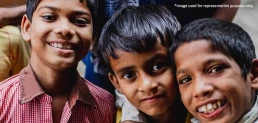

To change this, we need to look at the common diseases affecting children, understand simple yet effective steps to improve nutrition and hygiene, recognize the role parents and communities can play, and see how CRY is working to give every child a healthier tomorrow.
What are the most common diseases of childhood?
Childhood is often marked by frequent illnesses, many of which are preventable with proper care. Some of the most common childhood diseases in India include:
- Respiratory infections (Cold, flu, pneumonia): Children are more prone to catching infections due to their developing immune systems. Poor nutrition and crowded living spaces often worsen these conditions.
- Diarrheal diseases: Caused mainly by unsafe drinking water, poor sanitation, and unhygienic food practices, diarrhea remains one of the leading causes of child mortality worldwide.
- Malnutrition and anemia: Undernutrition, along with deficiencies like lack of iron, severely affects growth, immunity, and learning abilities in children.
- Skin infections: Lack of hygiene and clean surroundings often lead to fungal or bacterial skin issues, including scabies and ringworm.
- Worm infestations: Children in underprivileged communities are particularly vulnerable to intestinal worms due to poor sanitation and contaminated food or water.
Also Read: Vital Role of Nutrition in Protecting Marginalized Children
The role of nutrition in preventing childhood illness
Nutrition is one of the strongest defenses a child has against common diseases of childhood. Let’s understand the nutrient sources and the diseases they resist by building a strong immunity:
- Protecting from colds, flu, and other viral infections: Nutrients like vitamins A, C, and E, along with zinc and iron, play a key role in safeguarding from common flu and other viral infections.
- Protecting from undernutrition and stunted growth: A diet rich in proteins, leafy greens like drumsticks, pulses, fruits, and whole grains ensures children do not fall prey to undernutrition or iron-deficiency anemia.
- Protecting from delay in cognitive growth: Omega-3 fatty acids, iodine, and B vitamins are essential for healthy brain development, concentration, and learning abilities.
- Protecting from severe illness: Even when children do get sick, good nutrition helps their bodies cope better, reducing the severity and duration of illnesses.
How hygiene practices reduce the risk of illness
Nutrition alone cannot ensure a child’s well-being if they are growing up in poor environments with unhygienic habits. Good hygiene is a shield that protects children, especially in communities where medical care may not always be within reach.
- Handwashing with soap: Regularly washing hands before meals and after using the toilet is one of the most effective ways to prevent diarrhea, respiratory infections, and even eye diseases.
- Hygienic sanitation: Proper use of toilets and safe disposal of waste stop harmful bacteria and worms from spreading within communities.
- Menstrual hygiene: For adolescent girls, access to clean sanitary products and knowledge about menstrual hygiene is crucial. Poor menstrual hygiene can lead to infections, discomfort, and even school absenteeism.
- Oral hygiene: Brushing teeth twice a day keeps cavities, gum infections, and bad oral health at bay.
- Safe food practices: Cooking food properly, covering it to avoid contamination, and ensuring clean utensils prevent foodborne illnesses.
- Personal cleanliness: Bathing regularly, wearing clean clothes, and trimming nails help reduce the spread of skin infections and parasites.
Also Read: Let’s Protect Underserved Children From Ill Health
Combining nutrition and hygiene for stronger immunity
Good nutrition and proper hygiene work hand in hand to keep children healthy. While nutritious food strengthens the body from within, hygiene practices prevent harmful germs from causing illness. Together, they form a powerful shield, ensuring children can grow, learn, and thrive in good health.
Role of parents, schools, and communities
No parents or caregivers alone can ensure the best health of children by following the above practices. It is only when parents, schools, and communities come together that happier childhoods can be ensured through collaborative efforts.
- \
- Parents: Provide balanced meals, teach handwashing and personal hygiene, guide girls on menstrual hygiene.
- Schools: Offer nutritious meals, teach health and hygiene, maintain clean toilets and safe drinking water.
- Communities: Organize health camps, sanitation drives, and awareness programs to support children’s well-being.
Also Read: Anemia in Rural Children: A Health Problem We Can’t Ignore
How CRY America is promoting nutrition and hygiene to prevent childhood diseases
- WASH programme: CRY America’s project team conducts Water, Sanitation, and Hygiene (WASH) initiatives with the support of Panchayat leaders and School Management Committees, helping communities understand how simple hygiene practices can protect children from common childhood diseases.
- Filtered drinking water: CRY America’s project team guides communities to use natural, zero-cost methods to purify water at home thus making safe drinking water a part of children’s everyday lives.
- Kitchen gardening practices: The project team encourages families to grow small gardens in their backyards, giving children fresh vegetables and fruits right at home, and turning every meal into a step toward better health.
- Monitoring children’s growth & dietary plans: With the help of Anganwadi workers, CRY America’s project team ensures newborns and infants are registered, vaccinated on time, and their growth carefully tracked, ensuring that no child slips into undernutrition unnoticed.
- Referrals to NRC for severe malnutrition: When a child shows severe signs of malnutrition, our team works with government hospitals and Nutritional Rehab Centers (NRCs) to make sure they get the treatment and care needed for recovery.
- Anemia screening & Iron-Folic Supplementation: CRY America’s project teams organize health camps for adolescent girls, where those found with low haemoglobin are given Iron-Folic tablets to help them regain strength and continue their education without health setbacks.
- Encouraging poultry farming at home: The project team guides families to start small-scale poultry farming, giving children access to protein-rich food and improving the household’s nutrition in a sustainable way.
Conclusion
While we have helped shield millions of children by facilitating access to proper nutrition and hygiene, hundreds still await the nourishment they deserve to begin a healthier, brighter future. Donate now to ensure happier, and healthier childhoods .
Understanding Gender-Based Violence Against Children
Gender-Based Violence (GBV) is not an isolated issue that affects only the lives of immediate survivors. The consequences ripple and reflect on the lives of children too, who share the same household. Whether they experience it directly or witness it within their homes, the effects are long-lasting. When families choose violence as a way to function, it can disrupt their education, affect their mental well-being, and shape how they see the world around them.
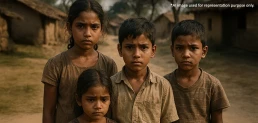

In this blog, let’s understand what GBV is, how it affects children, and the possible ways of preventing GBV, especially in underserved communities.
Also Read: Protecting Marginalized Girls
What is GBV
Gender-Based Violence (GBV) is an act of human rights violation that happens when someone is hurt or threatened because of the unequal power dynamics between men and women in society.
While boys and men can also face GBV, it’s mostly women and girls who are at risk. According to the UN Women 2023 Report, almost 1 in 3 women globally face some form of GBV, whether it’s physical, sexual, emotional, or financial.
The effects go beyond just the physical wounds, like injuries, unwanted pregnancies, and exposure to HIV. It reflects on their mental health too, in the form of anxiety, depression, and even post-traumatic stress.
Also Read: What is Gender Inequality?
Forms of GBV
Gender-based violence shows up in different ways, and each one hurts people regardless.
- Sexual violence: Forcing someone into any sexual act when they don’t want it.
- Child marriage: Getting a child, usually a girl, married before she’s old enough or ready.
- Domestic violence: Harming or controlling someone in the family, often a partner, through hurtful actions or words.
- Femicide: Killing a woman or girl just because she is female.
Why GBV Occurs
The roots of GBV lie in unstable households and a society that turns a blind eye to change. Let’s take a closer look at the causes:
- Gender inequality: It begins with the community mindset. When men are given unchecked power to decide, act, and react on behalf of women, women stop being treated as equals. They are instead controlled, confined, and often abused within their own homes.
- Poverty or unemployment: Financial stress can push individuals to their breaking point. Even though women aren’t the cause of job loss or low income, they end up bearing the brunt, treated as burdens, especially in underserved communities.
- Cultural apathy: Survivors often don’t even recognize GBV as a crime, because their communities treat it as normal. Even when someone tries to speak up, they’re silenced or shamed into staying quiet.
- Lack of awareness to access justice: To seek justice, one must first understand their rights. Illiteracy, poverty, child marriage, and fear of being socially isolated hold women back from taking legal action or finding support.
Also Read: Ways to Combat Gender Stereotypes in India
How GBV affects children
When GBV takes place at home, children are never just bystanders. Whether they face it directly or witness it happening to someone close, the impact runs deep.
- Loss of emotional regulation
Children who grow up around violence often find it hard to manage their emotions. Some act out, others go quiet. Anger, sadness, or fear becomes too big to handle.
- Dropouts and absenteeism in schools
For many children witnessing or experiencing GBV, home is hardly a safe space. The stress, fear, and tension often spill into their school life, leading to frequent absences or even dropping out altogether
- Violence becomes normal
Over time, children may start to believe that hurting or being hurt is just a part of life. When violence is all they see, it shapes what they think is okay.
- Limited financial resources are affecting their future
In homes where GBV continues, relationships break down, addictions creep in, and money drains fast. Children end up paying the price, with no funds left to support their education or future.
Also Read: Women’s Empowerment Through Education Creates Generational Change
Prevention of GBV
Stopping GBV isn’t just about having laws; it’s about building safer homes, stronger communities, and more aware children. Here’s how we can take small but meaningful steps:
- Empowering youth with education
When schools talk about gender, respect, boundaries, and consent, children and adolescents start to see things differently. It helps boys and girls grow up knowing their rights and how to speak up, starting at home.
- Women as community facilitators
When women come together, they create strength. By forming groups, raising their voices, and supporting each other, they inspire others to stand up and break the silence.
- Support from health workers and community mobilizers
Frontline health workers like nurses, doctors, and Anganwadi staff are often the first to notice signs of GBV. Similarly, local leaders like Panchayat members, Sarpanch, and the police play a key role in shaping community mindsets. When they’re educated about gender equality, women’s rights, and how to access those rights, they can listen, support, and guide survivors towards help and justice.
- Emotional support for children
Children who’ve seen or faced violence carry it inside. Talking to someone, getting the right care, and feeling safe again can help them slowly heal and rebuild.
- Teaching self-defense
In places where change is slow, self-defense gives girls the power to protect themselves. When they speak up or fight back, it shows the whole community that silence is no longer an option.
Conclusion
In underserved communities, many children lose out on school and peace of mind because of child marriage, poverty, or violence at home. CRY America steps in to help bring back what they’ve lost by making sure they get to learn, feel safe, and just be children again.
We believe every child should grow up in a space where they know their rights, feel protected, and can dream freely about who they want to be.
Donate to CRY America to give every child the safe and happy childhood they deserve.
Vaccines & newborns: Why immunization is key to infant survival
Every newborn deserves a healthy start to life, and vaccines play a vital role in making that possible. Immunization of infants is the most effective, science-backed way to protect them from life-threatening diseases in their early, most vulnerable months. Yet despite its proven impact, millions of babies still miss out due to inconsistent implementation, limited awareness, and vaccine hesitancy, especially in countries like India.
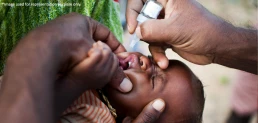

In this blog, let’s understand how immunization in infants works, why it’s so crucial for their survival, and what it will take to close the awareness gap and build community trust in vaccines.
What is immunization and how does it work?
Infant immunization is the process of giving vaccines to babies to protect them from serious diseases like measles, polio, and tuberculosis. These vaccines help build the baby’s natural defences (immunity) by teaching the body how to fight harmful germs. It keeps babies healthy, prevents illness, and saves lives, especially in their first few years of life.
Also Read: Causes of Neonatal Mortality in India
Importance of vaccination for infant survival
Infants have very limited immunity, which isn’t enough to protect them from the many serious diseases they’re exposed to. Hence, vaccination isn’t just a precaution, but it’s a vital intervention to ensure their healthy living.
- Protection against life threatening diseases
Vaccines protect infants from deadly illnesses such as polio, measles, and tetanus, which can cause severe complications like paralysis or even breathing difficulties in newborns and adults.
- Safeguards vulnerable lives around us
Vaccination not only protects the child receiving it but also helps prevent the spread of disease by shielding those who are too young or medically unable to be immunized.
- Prevents long-term struggles
Skipping vaccination can lead to lifelong health issues and hefty medical bills down the line. On the other hand, timely vaccination is a smart investment of effort where no cost is involved, if one avails them at the government healthcare centers.
- Eliminating diseases for future generations
When a community consistently follows immunization, it can wipe out life-threatening diseases that once posed serious risks. For instance, small pox; it no longer needs a vaccine because it’s been eradicated worldwide.
Also Read: Role of Nutrition
Key vaccines recommended for infants
Newborns and infants have unique immune responses that differ from adults and animals. Hence, let’s go through their age-specific vaccinations to ensure their well-being.
- Bacillus Calmette-Guerin (BCG)
Given at birth, this single-dose vaccine protects newborns from tuberculosis. - Oral Polio Vaccine (OPV)
OPV is administered at birth, then at 6, 10, and 14 weeks. It protects children under 5 from poliovirus, which can cause paralysis. - Hepatitis B Vaccine
This three-dose vaccine starts within 24 hours of birth, followed by doses between 1–2 months and again at 6–18 months. It protects the liver from hepatitis B virus. - Pentavalent Vaccine
Given at 6, 10, and 14 weeks, it protects against five diseases: diphtheria, pertussis, tetanus, hepatitis B, and Hib. - Rotavirus Vaccine (RVV)
Administered in three doses at 6, 10, and 14 weeks, it guards against rotavirus, this is a major cause of severe diarrhea in infants. - Pneumococcal Conjugate Vaccine (PCV)
PCV is given at 2, 4, and 6 months of age to protect against pneumonia, meningitis, and septicemia.
Also Read: Prioritizing Health and Nutrition for At-Risk Children in India
Addressing vaccine hesitancy among parents
Even in high-income countries like the U.S., 1 in 4 parents choose not to vaccinate their child, according to the U.S. National Library of Medicine. In India, it’s not always about choice, people often hesitate because of low awareness, limited access to healthcare, and the myths that still surround vaccine side effects.
Building trust through healthcare centres
India has a widespread network of Anganwadi Centers (AWCs), Anganwadi Workers (AWWs), and Auxiliary Nurse Midwives (ANMs) to support vaccination efforts. Yet, a significant gap remains in how communities access these services. When frontline workers and doctors engage more closely with people, it helps build trust. By sharing medical information in simple terms and real stories of hope from within the community, often with support from NGOs like CRY America, they make healthcare feel more accessible and relatable.
Capitalizing community stakeholders
Communities don’t easily trust outsiders who enter their space and start pointing out problems. That’s where local leaders like the Sarpanch, religious heads, and Panchayat members play a crucial role. When these leaders are made aware of the importance of vaccination, they become spokespersons and strong advocates for children’s well-being. And because the community trusts them, their message is more likely to be heard and accepted.
Mobilizing complex medical information
People are often more willing to deal with common illnesses than to crack complicated medical jargon. Hence, it’s important to simplify the language used when communicating with underserved communities. When doctors with support from NGOs like CRY America break down complex medical facts into simple, relatable messages; using local languages, illustrations, or culturally familiar analogies, the benefits of vaccination become clearer. And that’s when communities begin to trust the information and take it to heart.
Addressing Societal Fears and Myths
Myths and superstitions often stem from limited awareness passed down through generations. This cycle can only be broken when communities receive information from sources they trust. This credibility is a slow cooked process that ripples when the community stakeholders speak the same language and share consistent messages, whether it’s at the local healthcare center, in a Panchayat Sabha, or through women’s peer groups or mother’s peer groups supported by NGOs like CRY America. As trusted members of the community, these groups advocate for vaccination drives and help dispel myths from within.
Making vaccination accessible
All these efforts can fall short if, despite being informed, people are unable to access vaccines whether due to stockouts at healthcare centers, a shortage of trained nurses, or difficult terrains and long distances that make travel nearly impossible. To tackle these challenges, NGOs like CRY America works closely with local administrations to deploy mobile vaccination units in challenging areas and to support the training of Anganwadi Workers (AWWs) and Auxiliary Nurse Midwives (ANMs).
CRY America’s role in supporting children’s vaccination
Parvatiben, a young mother from an underserved community, almost gave up on immunizing her newborn after he developed swelling following a BCG vaccine, a common and usually mild reaction. Without proper information, such an experience can quickly turn into fear. That’s where CRY America stepped in to bridge the gap between awareness and action through ground-level engagement.
Through CRY’s supported Mother’s Groups, interactive awareness sessions, and one-on-one counseling, the Project GSS team helped her understand the benefits of vaccination and what side effects are normal versus concerning. They accompanied her on visits to the local health clinic and reinforced the importance of completing the immunization schedule for infants, particularly the Pentavalent vaccine, which protects against five life-threatening diseases.
Parvatiben once again found trust in the process, and ensured her child received all three doses on time. Today, she’s not just a mother who made an informed decision, but also a community advocate encouraging other mothers to overcome fears and embrace timely infant immunization.
Conclusion
Vaccination of infants is more than personal protection as it safeguards communities and secures a healthier future for generations. While India’s public health efforts have made considerable progress, the journey is still far from over, and with your continued support can help bridge this gap.
Donate to CRY America and ensure every child receives the protection they deserve because a healthy future begins with timely immunization today.











